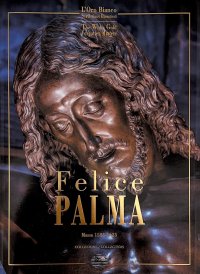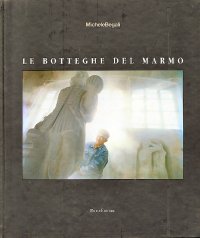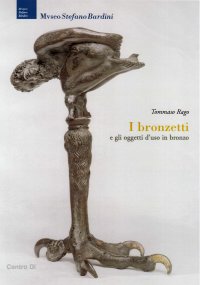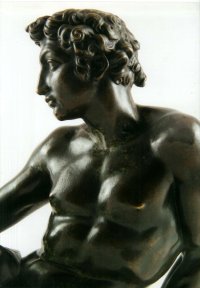Felice Palma. Massa 1583-1625. Collezione / Collection.
Texts by Andrei Cristina, Ciarlo Nicola, Federici Fabrizio, Claudio Casini and Sara Ragni.
Italian and English Text.
Pontedera, 2024; bound in a case, pp. 289, b/w and col. ill., b/w and col. plates, cm 24,5x34.
(L'Oro Bianco. Straordinari Dimenticati. The White Gold Forgotten Masters).
cover price: € 160.00
|
Books included in the offer:
Felice Palma. Massa 1583-1625. Collezione / Collection.
Texts by Andrei Cristina, Ciarlo Nicola, Federici Fabrizio, Claudio Casini and Sara Ragni.
Italian and English Text.
Pontedera, 2024; bound in a case, pp. 289, b/w and col. ill., b/w and col. plates, cm 24,5x34.
(L'Oro Bianco. Straordinari Dimenticati. The White Gold Forgotten Masters).
FREE (cover price: € 160.00)
Le botteghe del marmo
Italian and English Text.
Ospedaletto, 1992; bound, pp. 153, 10 b/w ill., 60 col. ill., cm 24x29.
(Immagine).
FREE (cover price: € 34.49)
Museo Stefano Bardini. I Bronzetti e gli Oggetti d'Uso in Bronzo
Edited by Nesi A.
Firenze, 2009; paperback, pp. 191, 102 b/w ill., 7 col. ill., cm 17x24,5.
(Museo Stefano Bardini).
FREE (cover price: € 30.00)
Bronzetti e Rilievi dal XV al XVIII Secolo
Bologna, 2015; 2 vols., bound in a case, pp. 729, ill., col. plates, cm 21,5x30,5.
FREE (cover price: € 90.00)
Julião Sarmento. The Selective Glance
Silvana Editoriale
Turin, Gam, 13 June - 31 August, 2014.
English Text.
Cinisello Balsamo, 2014; hardback, pp. 216, 150 b/w and col. ill., 150 b/w and col. plates, cm 22,5x29.
(Cataloghi di Mostre).
series: Cataloghi di Mostre
Other editions available: Edizione italiana (ISBN: 88-366-2918-0)
ISBN: 88-366-2919-9 - EAN13: 9788836629190
Subject: Architects and their Practices,Monographs (Painting and Drawing),Monographs (Sculpture and Decorative Arts)
Period: 1800-1960 (XIX-XX) Modern Period
Languages: 
Weight: 1.43 kg
His words betray the enthusiasm of a poet giving free rein to the most natural impulses of his spirit, whose work is joyful adventure and intimate (im)balance between forms of expression. At the same time, in Sarmento's long and intense experience, and in the inspiration openly drawn from the work of Morandi and LeWitt, there is also a clear and almost scientifi c striving for solid formal coherence.
We thus have departures and returns, instinct and investigation, and perhaps also chaos and order in a mutually generative relationship that lives and draws sustenance uninterruptedly within the same continuum. As he says, "What I do today is the direct consequence what I did yesterday." If "the works flow in time", as he puts it, what is presented in this show constitutes, however, not only a dialogue (as in the philosophy of the project to which it belongs) but also a temporal segment of Julião Sarmento's artistic experience capable in its complexity of prompting awareness of events and creative evolutions that would otherwise escape attention and that culminate as a whole in another "delicate loss of balance", this time in the viewer.












